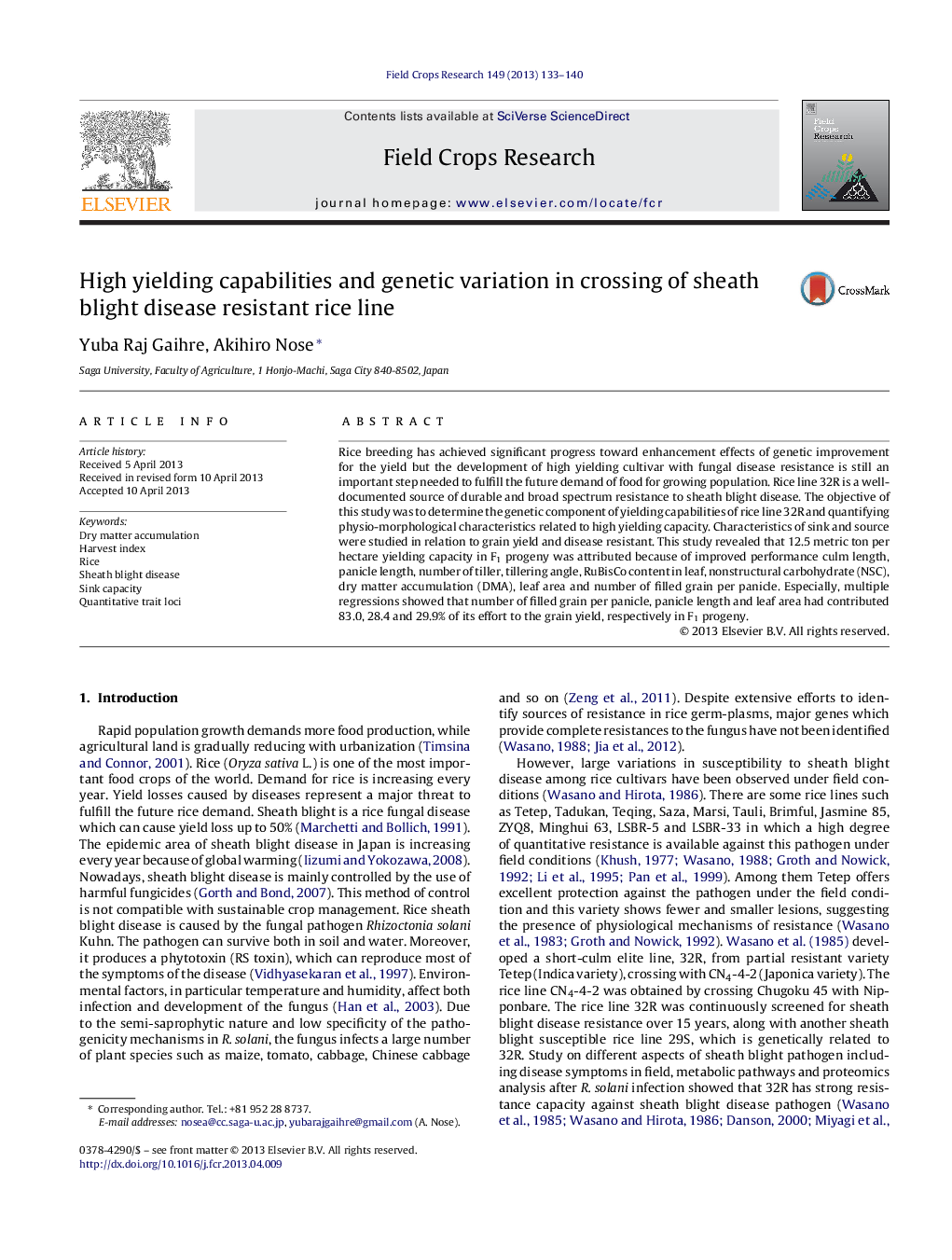| Article ID | Journal | Published Year | Pages | File Type |
|---|---|---|---|---|
| 6375252 | Field Crops Research | 2013 | 8 Pages |
Abstract
Rice breeding has achieved significant progress toward enhancement effects of genetic improvement for the yield but the development of high yielding cultivar with fungal disease resistance is still an important step needed to fulfill the future demand of food for growing population. Rice line 32R is a well-documented source of durable and broad spectrum resistance to sheath blight disease. The objective of this study was to determine the genetic component of yielding capabilities of rice line 32R and quantifying physio-morphological characteristics related to high yielding capacity. Characteristics of sink and source were studied in relation to grain yield and disease resistant. This study revealed that 12.5 metric ton per hectare yielding capacity in F1 progeny was attributed because of improved performance culm length, panicle length, number of tiller, tillering angle, RuBisCo content in leaf, nonstructural carbohydrate (NSC), dry matter accumulation (DMA), leaf area and number of filled grain per panicle. Especially, multiple regressions showed that number of filled grain per panicle, panicle length and leaf area had contributed 83.0, 28.4 and 29.9% of its effort to the grain yield, respectively in F1 progeny.
Keywords
Related Topics
Life Sciences
Agricultural and Biological Sciences
Agronomy and Crop Science
Authors
Yuba Raj Gaihre, Akihiro Nose,
